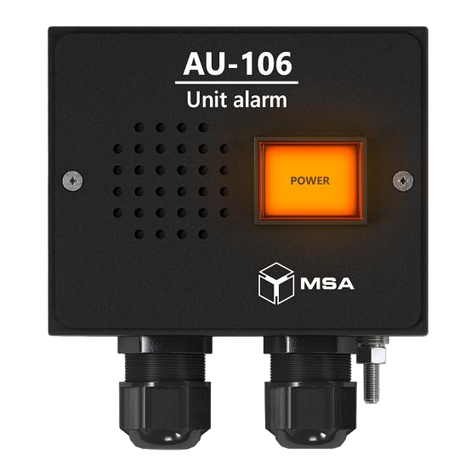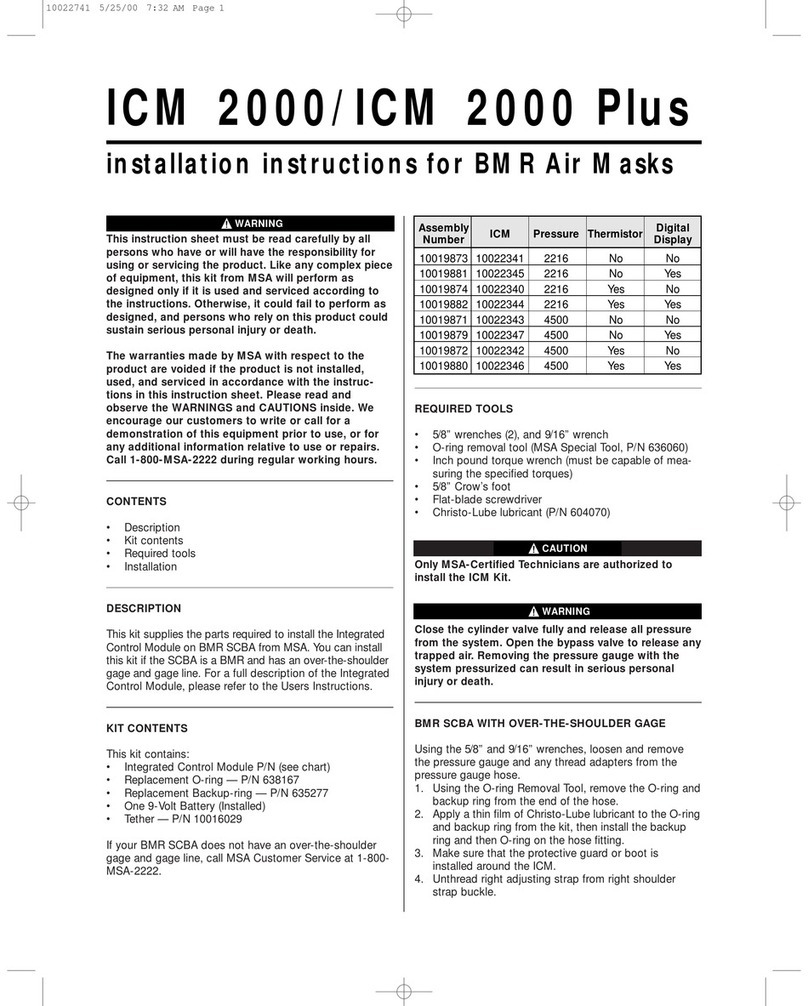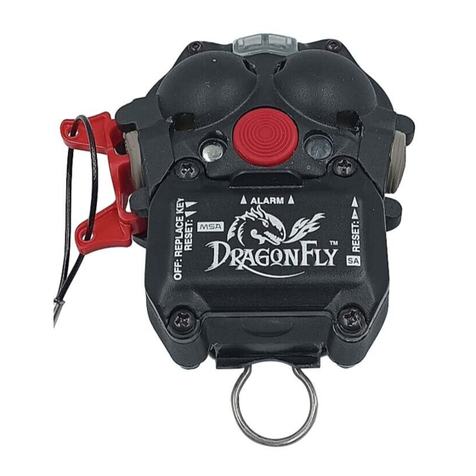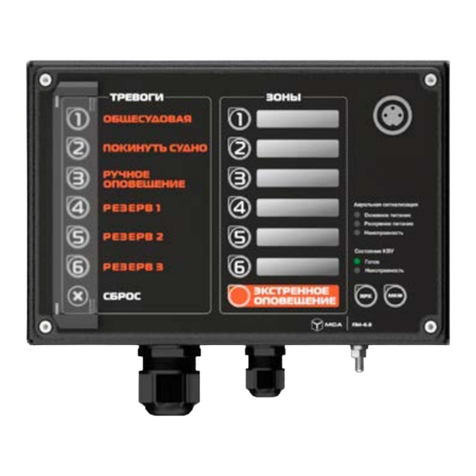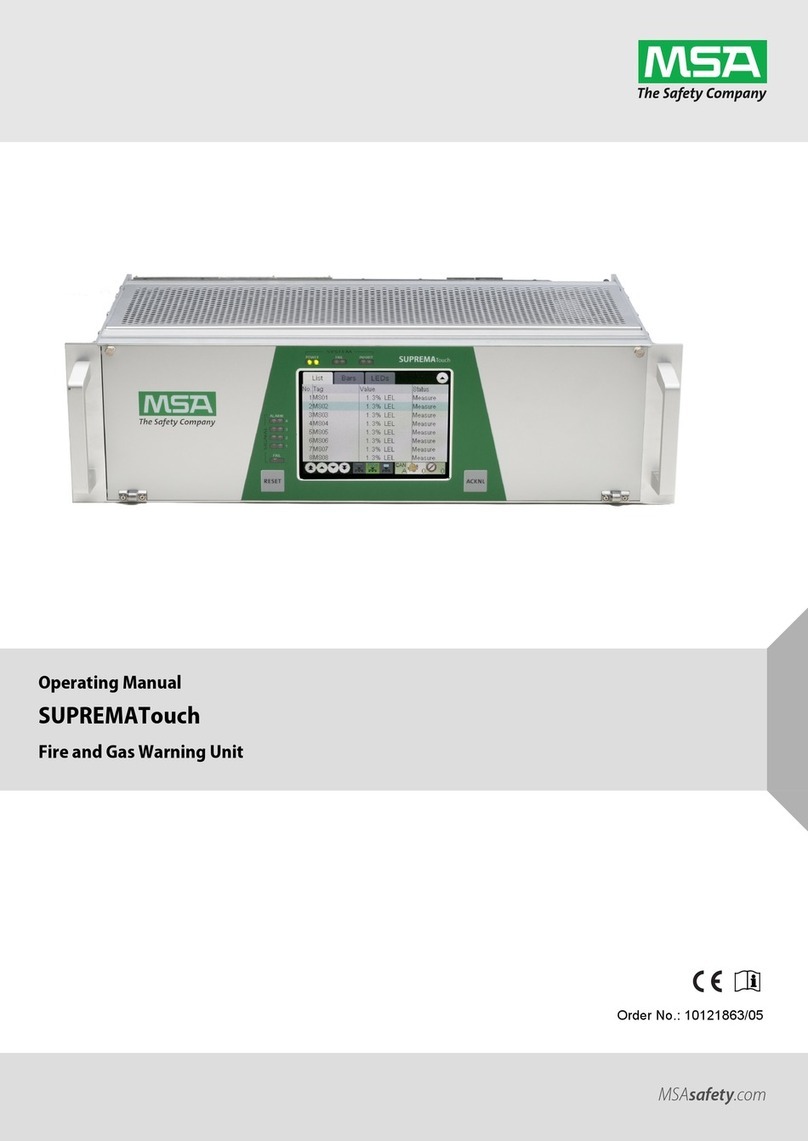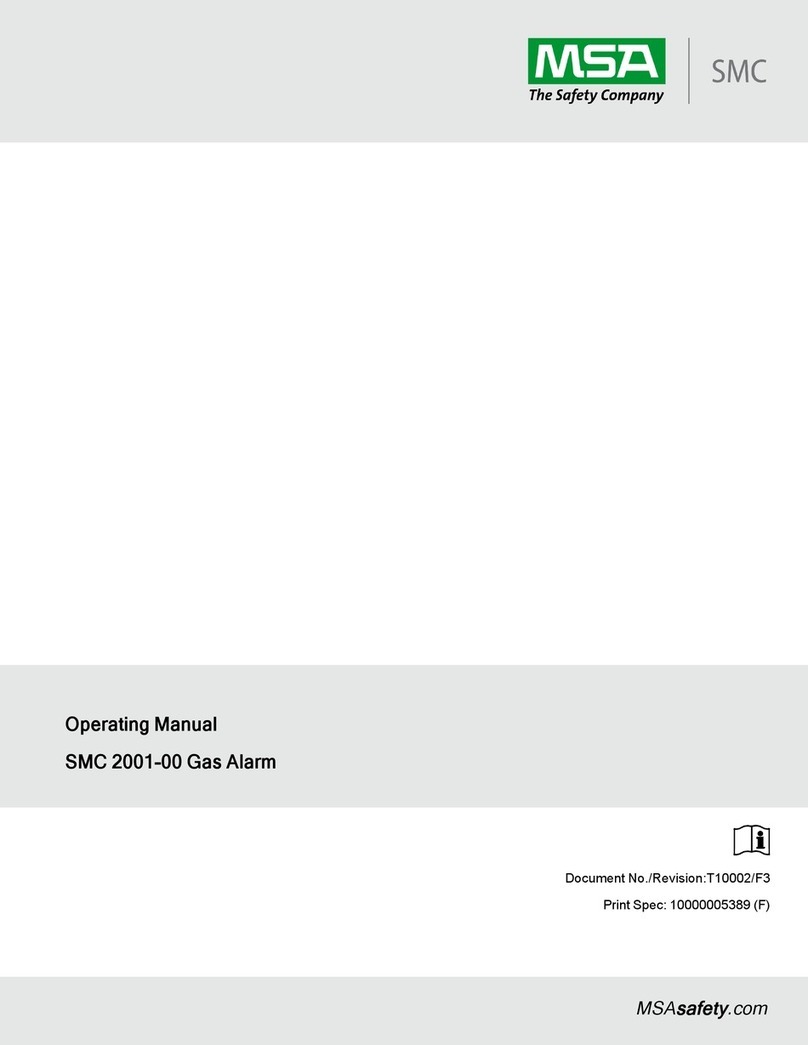
MSA Portable Instrument Warranty
1. Warranty-
ITEM WARRANTY PERIOD
Chassis and electronics Lifetime (MSA will support product
for five years after production ends)
All sensors, unless otherwise specified Two years
Pump and drive unit Two years
Rechargeable batteries Two years
Thiswarrantydoesnotcoverfilters,fuses,etc.Certainotheraccessories
not specifically listed here may have different warranty periods. This
warrantyisvalidonlyiftheproductismaintainedandusedinaccordance
with Seller’s instructions and/or recommendations. The Seller shall be
released from all obligations under this warranty in the event repairs or
modifications are made by persons other than its own or authorized
service personnel or ifthe warranty claim resultsfrom physical abuseor
misuse of the product. No agent, employee or representative of the
Seller has any authority to bind the Seller to any affirmation,
representation or warranty concerning this product. Seller makes no
warranty concerning components or accessories not manufactured by
the Seller, but will pass on to the Purchaser all warranties of
manufacturers of such components. THIS WARRANTY IS IN LIEU OF
ALL OTHER WARRANTIES, EXPRESSED, IMPLIED OR
STATUTORY, AND IS STRICTLY LIMITED TO THE TERMS
HEREOF. SELLER SPECIFICALLY DISCLAIMS ANY WARRANTY
OF MERCHANTABILITY OR OF FITNESS FOR A PARTICULAR
PURPOSE.
2. ExclusiveRemedy-It is expressly agreed that Purchaser’s sole and
exclusive remedy for breach of the above warranty, for any tortious
conduct of Seller, or for any other causeof action, shall bethe repair
and/or replacement at Seller’s option, of any equipment or parts
thereof, which after examination by Seller is proven to be defective.
Replacement equipment and/or parts will be provided at no cost to
Purchaser, F.O.B. Seller’s Plant. Failure of Seller to successfully
repair any nonconforming product shall not cause the remedy
established hereby to fail of its essential purpose.
3. Exclusion of Consequential Damages- Purchaser specifically
understands and agrees that under no circumstances will seller be
liable to purchaser foreconomic, special,incidental or consequential
damages or losses of any kind whatsoever, including but not limited
to, loss of anticipated profits and any other loss causedby reason of
nonoperation of the goods.This exclusion is applicable to claims for
breach of warranty, tortious conduct or any other cause of action
against seller.






